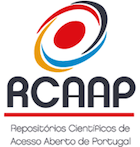José Saramago e Evgen Bavcar: Os paradoxos do olhar
DOI:
https://doi.org/10.25770/artc.12180Palabras clave:
Gaze, Blindness, Image, Photography, Body, SaramagoResumen
In "Evgen Bavcar e José Saramago: looking paradoxes" we discuss the great amount of luminosity as a specificity of our society. We undertake a critical study on vision from a comparative analysis between the Saramago's romance Blindness, and five photos of Evgen Bavcar in his book Memórias do Brasil. One of the aims of this work is to try to answer these questions: What's there about looking? Which are the dimensions of the visible? In this study we consider blindness as another possibility of perception in a moment where images are so dominant, as well as imagination like the source for new and original images. We develop a discussion about the body as a vehicle to understand the world primarily to Bavcar, who has in his body one of the greatest instruments to his photographic act, but also to Saramago's blind characters, who recreate a new way to be in the world from the need of physical contact in order to guide themselves in the city.
Em “Evgen Bavcar e José Saramago: os paradoxos do olhar,” discutimos o excesso de luminosidade como característica da sociedade contemporânea. Empreendemos um estudo crítico da visão a partir de uma análise comparativa entre o romance O Ensaio sobre a cegueira, de José Saramago, e cinco fotografias de Evgen Bavcar, presentes no livro Memórias do Brasil. Um dos objetivos do trabalho é procurarmos responder às questões: O que é ver? Quais as dimensões do visível? Neste estudo pensamos a cegueira como uma outra possibilidade de percepção em um tempo onde há o predomínio das imagens e também a imaginação como o berço para imagens novas e originais. Empreendemos uma discussão sobre o corpo como um veículo de compreensão do mundo tanto para Bavcar, que tem em seu corpo um dos maiores instrumentos do seu ato fotográfico, como para os personagens cegos de Saramago, que reinventam uma nova maneira de estar no mundo a partir da necessidade do contato físico para se orientarem na cidade.
Descargas
Publicado
Cómo citar
Número
Sección
Licencia
It is assumed as Author the person (natural or legal) whose name is indicated as such in the work, as embodied practice, or announced to the public by any kind of use or communication. It is recommended that the submitted works do not exceed the total number of four authors. In cases where the number of authors exceeds four, the editors will, ultimately, decide about the acceptance of the submitted work.
TERMS
By submitting a paper to artciencia.com the author accepts, without any kind of reservation, the terms indicated below.
The mere act of submitting a paper is assumed as full comprehension and acceptance, even if in tacit form, of these terms and ignorance about them cannot be invoked.
Authors who publish in artciencia.com, Revista de Arte, Ciência e Comunicação will release their contributions under the Creative Commons Licence CC-BY-NC 4.0: «Licensees may copy, distribute, display, and perform the work and make derivative works based on it only for non-commercial purposes».
The author retains the rights to his work, but its publication in artciencia.com automatically implies the complete and exclusive assignment of copyright to the first edition.
The author is aware that he will not receive any payment / copyright compensation relating to the work submitted despite it is, or not, published.
Similarly, artciencia.com will not charge the author any submission, publishing or distribution fees related with the submitted paper.
The views and opinions expressed in published works are the sole responsibility of the author and may not reflect the editorial policy of artciencia.com.
It should be noted that artciencia.com can reject, by decision of the editors, any submission that manifestly collides with the journal's editorial policy. In such cases the author will be informed of that decision.
After the first publication, the author is authorized to take on additional contracts, independent of artciencia.com, for the dissemination of his work by other means. He must, in that case, to always safeguard the full citation of the original publication.
The author of a published paper is encouraged and has permission to distribute his work by any means, safeguarding the aspects mentioned in the previous paragraph.



